
Welcome to the enchanting world beneath the waves, where the dance of sunlight creates a mosaic on the ocean floor, and vibrant marine life thrives in harmony. Our oceans are a source of wonder and sustenance for us all. However, as caretakers of this aquatic realm, we face a crucial task: to ensure that our actions in harvesting its resources are not only fruitful but also responsible.
In this exploration of “Sustainable Ocean Resource Harvesting: Navigating Responsibility,” we embark on a journey that transcends age and background. Picture a world where fish dart freely, coral reefs pulse with life, and the ocean’s bounty is a gift for today and tomorrow. It’s a world we all want to preserve, and that journey begins with understanding how to harvest its resources sustainably.
Contents
- Challenges of Marine Resource Exploitation.🐟
- Sustainable Approaches in Fishing and Aquaculture.🐟
- Technology and Science.🐟
- Global Collaboration.🐟
- Questions and Answers that Help the Ocean🐟
- What is the direct impact of overfishing on the marine food chain and, consequently, on human food security?
- What technological advances are currently being used to monitor and manage fishing and aquaculture activities in the oceans more effectively?
- What are the main global initiatives addressing the challenges of unsustainable exploitation of marine resources, and what local measures are being taken to support these efforts?
Challenges of Marine Resource Exploitation.🐟
Diving into the heart of our oceanic odyssey, let’s confront the challenges that ripple beneath the surface of sustainable ocean resource harvesting. Our journey begins with the gentle sway of seaweed and the swift dart of fish, but, alas, even this aquatic haven faces trials.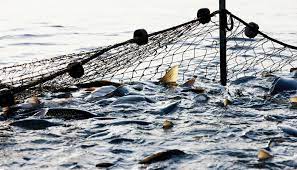
1. Unveiling the Deep Challenges:
In the grandeur of the underwater world, where some dream of the chance to swim with sea turtles, a more somber reality exists. Imagine a bustling marketplace, not of goods, but of marine treasures. Fishermen, with nets cast wide, seek to capture the ocean’s bounty. However, in this pursuit, there lies a perilous pitfall: the threat of overfishing.
2. The Symphony of Biodiversity:
In the oceanic orchestra, each species plays a unique tune. From the melodious hum of whales to the intricate clicks of shrimp, biodiversity is the heart and soul of our seas. Yet, the overharvesting of certain species disrupts this symphony, creating dissonance that echoes through the underwater corridors. The delicate balance that sustains life beneath the waves is at risk.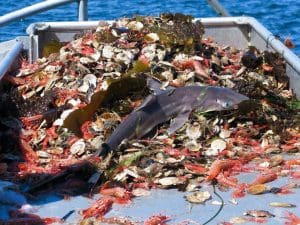
3. Impact on Ocean Health:
Picture the ocean as a colossal, interconnected organism. Each wave, each creature, plays a role in maintaining its vitality. Unfortunately, sustainable ocean resource harvesting morphs into a precarious dance when we surpass nature’s rhythm. Overexploitation becomes a toxin, seeping into the veins of this colossal being, threatening the very essence of its health.
As we confront these challenges, the beacon of responsibility guides us. It beckons us to embrace sustainable practices, to foster an environment where the thrill of getting to swim with sea turtles remains a reality for future generations. Let’s sail these waters together, understanding that the fate of our oceans rests in our collective hands. The dance continues, not just for today but for an eternity beneath the waves.
Sustainable Approaches in Fishing and Aquaculture.🐟
Embarking on our culinary voyage beneath the waves, let’s explore the realm of “Harmony on the Plate: Seafood and Wine Matching” while unraveling the secrets of sustainable ocean resource harvesting. Here, we don’t just cast nets; we weave a sustainable tapestry that resonates with the delicate dance of marine life.
1. Selective Capturing: A Ballet of Precision:
In the grand theater of the sea, where the ocean currents conduct a ballet, fishermen have learned to choreograph their movements. Imagine a dance where only the chosen performers step into the spotlight. This is the essence of selective capturing—a practice that involves choosing specific species, allowing others to gracefully continue their aquatic routines. Through this artful ballet, we safeguard the diversity that makes our oceans an enchanting spectacle.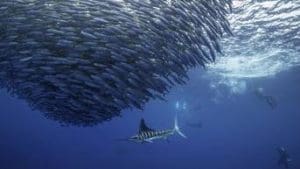
2. Aquaculture’s Finest Hour:
Now, let’s turn our gaze to aquaculture, the virtuoso of our seafood symphony. Aquaculturists are the conductors, orchestrating an environment where marine life flourishes sustainably. Picture a seafood farm as a well-tuned orchestra, each species contributing to the melodious ensemble. From shrimp to salmon, every note is played in harmony, ensuring a bountiful yet responsible feast.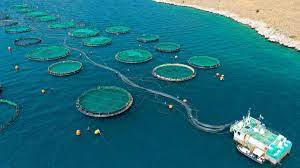
3. Marine Sanctuaries: Nature’s Safe Havens:
As we delve deeper, we encounter the concept of marine sanctuaries—nature’s safe havens for aquatic life. Imagine underwater reserves where marine creatures roam freely, undisturbed by human intervention. These sanctuaries act as protective shields, fostering the regeneration of species and maintaining the delicate balance of the oceanic ecosystem. They are the guardians of biodiversity, ensuring that our oceans teem with life for generations to come.
Technology and Science.🐟
As we voyage deeper into the azure expanse, let’s uncover the marvels of “Technology and Science” and their pivotal role in steering the ship of sustainable ocean resource harvesting. Picture it as a grand odyssey where innovation and understanding join forces to preserve the magic beneath the waves.
1. Remote Guardians: Monitoring Oceans from Afar.
In our modern quest for responsible resource management, technology emerges as a silent guardian. Remote monitoring, akin to an ever-watchful lighthouse, allows scientists to keep a vigilant eye on the health of our oceans. Satellites orbit above, capturing snapshots of vast stretches of water, helping us understand the ebb and flow of oceanic life. It’s a high-tech sentinel, ensuring the balance remains undisturbed.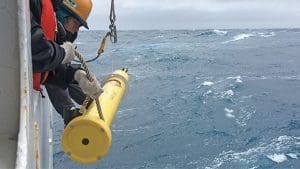
2. Unveiling Genetic Secrets.
Delve into the microscopic realms where genetic secrets hold the key to the survival of aquatic species. Here, science becomes an ally, guiding us through the intricacies of DNA to develop Aquatic species survival techniques. Through careful genetic research, scientists work to enhance the resilience of marine life, ensuring they weather the changing tides of our oceans. It’s a tale of adaptation and survival, written in the language of genes.
3. Aquaculture’s Scientific Renaissance:
Imagine aquaculture as a laboratory, where innovation and science converge to redefine the future of seafood. In this scientific renaissance, researchers explore ways to improve aquaculture practices, minimizing environmental impact and maximizing efficiency. From nutrient-rich feeds to advanced filtration systems, science becomes the architect of a sustainable aquaculture landscape.
Global Collaboration.🐟
In the vast tapestry of our oceans, the call for sustainable ocean resource harvesting echoes across borders. Here, in the realm of “Global Collaboration,” nations, like sailors on a shared voyage, come together to navigate the complexities of oceanic preservation. It’s a story of unity written in the waves.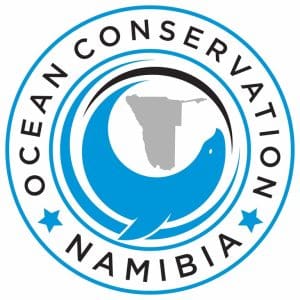
Imagine our oceans as a colossal mosaic, each piece interwoven with the efforts of nations worldwide. The realization dawns that the health of our oceans is a shared responsibility, transcending geographical boundaries. This understanding lays the foundation for global collaboration, where the fate of one nation’s seas intertwines with the destiny of all.
2. Treaties and Alliances: Safeguarding the Blue Horizon:
In this grand alliance, treaties and agreements emerge as the compass guiding nations toward a sustainable future. Picture it as a pact among sailors, each committing to protect and preserve the vast blue horizon. Treaties, like whispered promises on the wind, bind nations in a collective effort to combat overfishing, pollution, and other threats to our shared aquatic home.
3. The Ripple Effect: Echoes for Future Generations:
As nations collaborate, the impact of their collective actions ripples through time. Like echoes in a cave, these efforts reverberate for future generations. The preservation of our oceans becomes a legacy—a gift handed down from the collaborative efforts of today to the flourishing seas that will cradle the dreams of tomorrow.
Questions and Answers that Help the Ocean🐟
What is the direct impact of overfishing on the marine food chain and, consequently, on human food security?
The direct impact of overfishing on the marine food chain is profound. When certain fish species are excessively harvested, it disrupts the natural balance of the ecosystem. Predatory species may experience population declines, leading to an increase in the numbers of their prey. This, in turn, affects the abundance and diversity of other species, causing a cascade effect throughout the food web. Ultimately, the repercussions extend to human food security, as overfishing can deplete key fish stocks, reducing the availability of a crucial protein source for many communities.
What technological advances are currently being used to monitor and manage fishing and aquaculture activities in the oceans more effectively?
Cutting-edge technologies play a pivotal role in enhancing the monitoring and management of fishing and aquaculture. Satellite technology enables the tracking of fishing vessels in real-time, allowing authorities to detect illegal, unreported, and unregulated (IUU) fishing. Additionally, advancements in sonar and underwater robotics aid in assessing fish populations and the health of ecosystems. Electronic monitoring systems onboard vessels provide accurate data on catch sizes and bycatch, enabling more informed decision-making. These technological tools collectively contribute to more efficient and sustainable practices in fisheries and aquaculture.
What are the main global initiatives addressing the challenges of unsustainable exploitation of marine resources, and what local measures are being taken to support these efforts?
Several global initiatives are actively addressing the challenges of unsustainable exploitation of marine resources. Organizations such as the United Nations Food and Agriculture Organization (FAO) and the Convention on Biological Diversity (CBD) work towards sustainable fisheries management and marine conservation. Locally, many regions are implementing marine protected areas (MPAs) to safeguard critical ecosystems and allow fish populations to recover. Community-based fisheries management, involving local stakeholders in decision-making, is gaining prominence as an effective way to ensure sustainable resource use. Collaboration between governments, NGOs, and communities is crucial for the success of these initiatives at both global and local levels.


